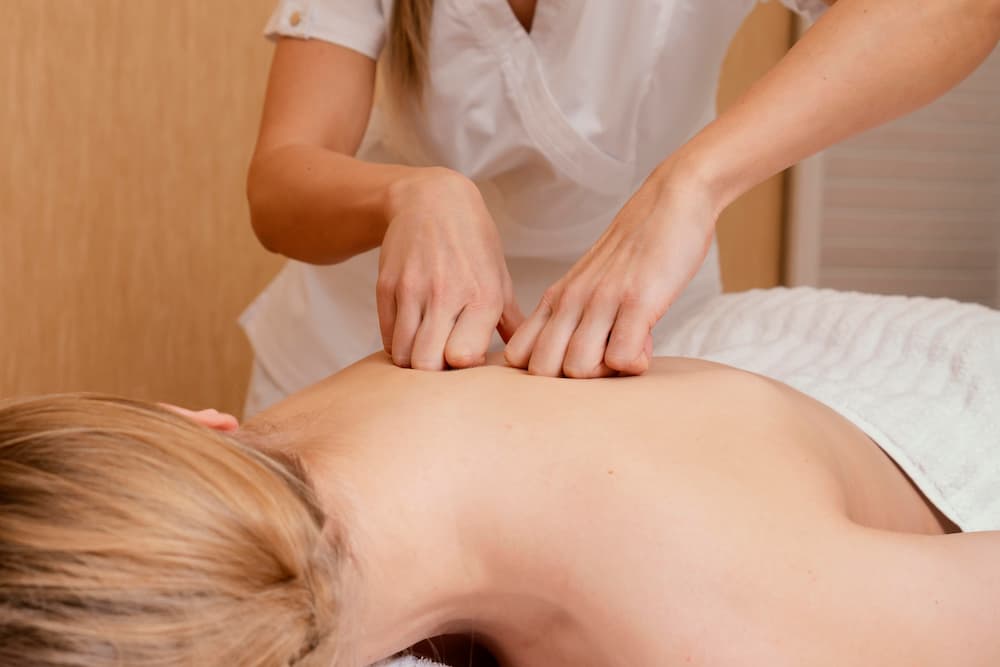
In the middle of Manhattan’s constant motion, a Thai massage session can feel like a rare pause button. Rooted in ancient Southeast Asian healing traditions, this practice blends deliberate postures, careful pressure, and mindful breathing to release built‑up tension. In a city known for speed, taking a moment to reset can shift a whole day—from crowded commute to calmer, more centered you. If you’ve ever wondered how this traditional art translates to a modern urban setting, you’re about to discover how it fits into a busy New York routine.
What makes Thai massage distinctive
Thai massage is not just a massage in the ordinary sense. It unfolds as a guided sequence where the practitioner uses hands, thumbs, elbows, knees, and even feet to move you through stretches that resemble assisted yoga. You’ll usually wear loose, comfortable clothing, and the session often happens on a padded mat on the floor, rather than a raised table.
Oils aren’t central to the technique; the emphasis is on releasing stiffness and encouraging fluid range of motion. The therapist works with your breath, applying steady pressure and gentle leverage to open joints and soften tight muscles. While many people find the practice rooted in traditional concepts like energy lines, you don’t need to believe in any particular philosophy to benefit—just listen to your body and communicate your comfort level.
Where to find authentic Thai massage in Manhattan
Manhattan offers a broad spectrum of wellness spaces, from tranquil studios to practical clinics. For an authentic Thai massage, look for studios that highlight traditional techniques or therapists trained in established programs in Thailand, Laos, or respected U.S. schools. A good sign is a focus on client-centered care, where sessions are adjusted to personal goals and limits.
Neighborhoods such as the Lower East Side, Chinatown, and Midtown often host studios that emphasize floor work and a calm, respectful ambiance. If you’re new to the city, ask for recommendations from friends or colleagues who’ve had reliable experiences. A quick pre-session chat can help you gauge the vibe, the therapist’s approach, and whether a particular space feels right for you.
What to expect during a session
Most sessions begin with a brief intake about any injuries, health considerations, or areas to avoid. You’ll typically be dressed in comfortable clothing, and your therapist will guide you through a sequence of stretches and supported postures. The tempo and intensity can vary, but the goal remains steady: release tension and encourage freer movement.
Communication is essential. If a stretch or pressure feels uncomfortable, speak up—your therapist can adjust technique, pace, or positioning. Sessions usually run from 60 to 120 minutes, with longer appointments allowing a more thorough exploration of movement and release. After the work, a short period of rest helps your body integrate the changes before you rejoin the city’s rhythm.
How Thai massage differs from other therapies
In contrast to a typical table-based massage, Thai massage is highly movement-oriented. You’ll participate in the process, guided by the practitioner’s instruction and your own comfort. This collaborative approach can feel restorative in a different way, building mobility rather than simply reducing muscle soreness.
Another distinction is the setting and approach to touch. Thai massage often takes place on a mat on the floor, fully clothed, with no oils involved. The therapist’s body weight and leverage drive the work, which can produce a longer, more encompassing sense of release than some traditional modalities. If you’re curious about the texture of this practice, you might find it surprisingly gentle at the outset, growing deeper as your body yields.
| Aspect | Thai massage |
|---|---|
| Positioning | On a mat on the floor, fully clothed |
| Touch | Guided pressure, leverage, and stretching |
| Oil | Oil-free |
| Engagement | Active participation through breathing and cooperation |
Choosing a practitioner in Manhattan
Experience and training matter. Seek therapists with formal Thai massage education, whether through temple programs, reputable Thai massage schools, or certified professional programs. Ask about their typical pressure range, how they pace a session, and how they tailor work to injuries or specific mobility goals.
In addition to skill, pay attention to the studio’s atmosphere. Cleanliness, clear boundaries, and a calm, respectful environment are signs you’re likely in good hands. If you’re managing health conditions—recent surgeries, pregnancy, or circulatory concerns—inform the therapist ahead of time so they can adapt safely.
Tips for first-timers
Entering a Thai massage for the first time is an invitation to curiosity rather than a test of endurance. Start with a moderate pace and pressure, and don’t be afraid to adjust as you go. You’ll likely discover that the stretches feel more like guided movement than a routine stretch alone.
Plan to hydrate beforehand and after the session, and avoid heavy meals right before you go. Give yourself a few minutes after the treatment to reorient—breathing slowly, sipping water, and letting your body settle can make the experience more integrative. A regular pattern, even a monthly visit, can yield gradual improvements in flexibility and relief from chronic tension.
Practical notes to enhance your visit
Arriving a little early for paperwork or a quick Q&A helps set expectations. Bring a light jacket or layer if you tend to feel cooler during floor work, and wear clothes you can move in freely. If you’ve had recent injuries or medical procedures, bring a concise note from your clinician so the therapist can plan appropriately.
As you explore Thai massage in Manhattan, you’ll likely notice how personal the experience is. The best sessions leave you with a sense of quiet, a release in the shoulders, and a momentum of calm that travels with you back into the street noise. It’s not a miracle cure, but when you find the right practitioner, you may discover a dependable ally for managing stress, boosting mobility, and simply feeling more at home in your body in a bustling city.